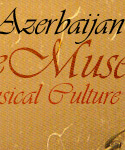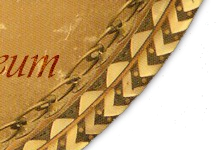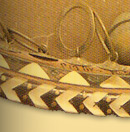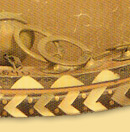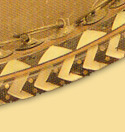Rud

Listen

|
The rud is another ancient musical instrument that was mentioned in the works
of Azerbaijani medieval classical poets. In his “Iskandarname”, Nizami described
it in the following way:
Singer, help me, play on the rud,
Wake me up
from a ruthless dream.
Maybe the sound of the rud, rippling as the
brook
Will extinguish the thirst of my flaring soul.
Much information about the rud can be found in the works of Gatran Tabrizi
(9th century). In his treatise, Abdulgadir Maraghayi mentions the rud: “Rud
hani: Up to half of its surface is covered by skin, and frets are fastened to
it; it has four strings. It is played like an ancient ud.”
The rud, considered as mainly a palace musical instrument, was used in
Azerbaijan up until the 16th-17th centuries. Researchers have found out that the
first samples of the rud were made of pumpkin, and that the strings were made of
silk and animal gut. It’s remarkable that its appearance reminds one of a
pumpkin.
Its structure differs from that of other string instruments. Fish skin is
pulled over half of the body’s surface, and the other part is made of pine.
Primarily, the instrument was played with the fingers; later it was played with
the help of a plectrum made of soft material. The rud’s body is made of mulberry
wood and apricot wood, the neck and head are made of nut wood, and the pegs are
made of pear wood. A total of 12 frets are fastened to the instrument’s
fret-board. The timbre of its sound is low. The total length of the instrument
is 860 mm. The length of the body is 495 mm, the width is 335 mm and the height
is 170 mm. The length of the neck is 285 mm. The scale of the rud ranges from
the “mi” of the great octave to the “si” of the second octave.
|

